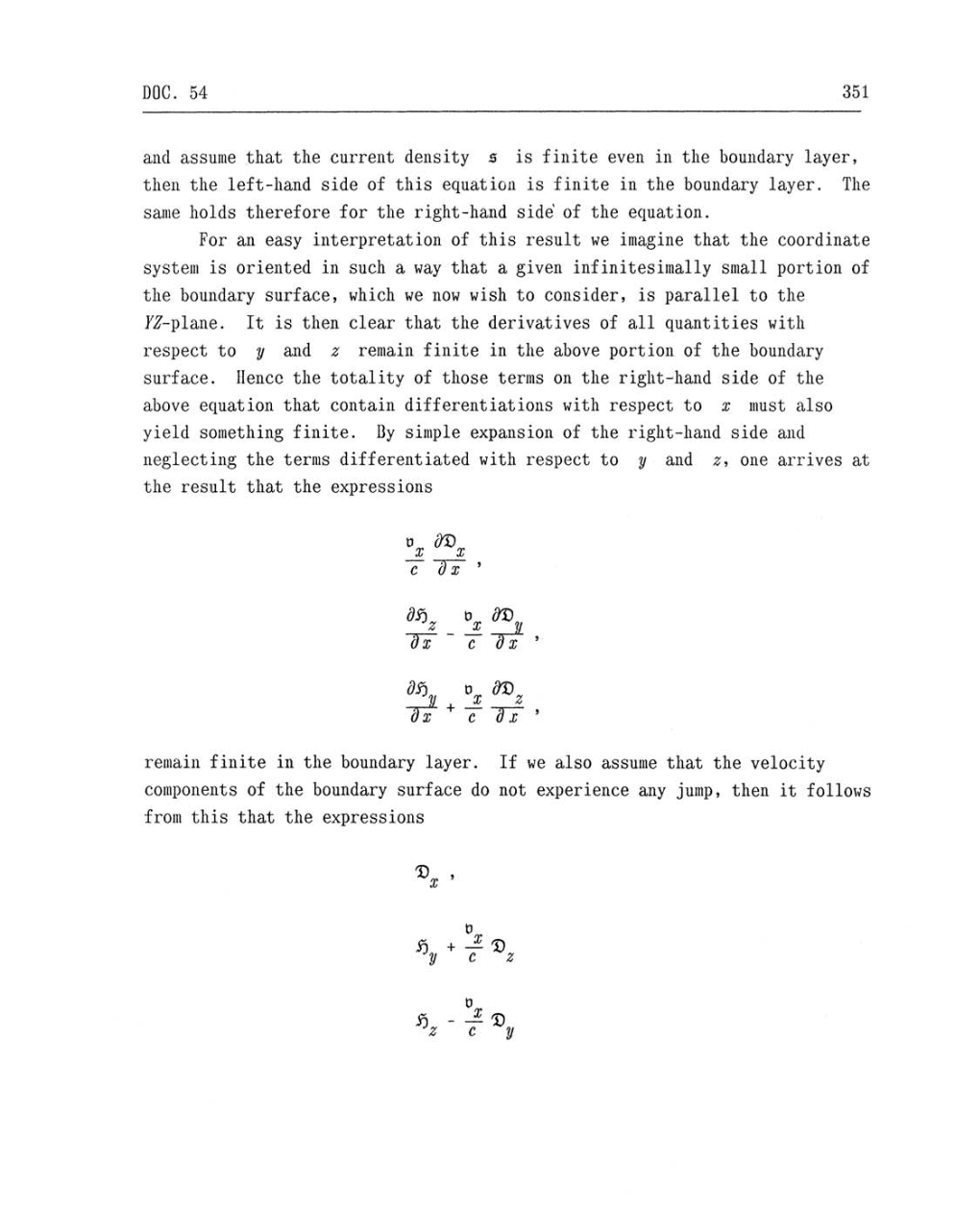DOC.
54 351
and
assume
that the
current
density
s
is
finite
even
in
the
boundary
layer,
then the left-hand side of this
equation
is finite in the
boundary
layer.
The
same
holds therefore for the
right-hand
side of the
equation.
For
an
easy
interpretation
of
this result
we imagine
that the coordinate
system
is oriented
in
such
a
way
that
a
given
infinitesimally small portion
of
the
boundary
surface,
which
we now
wish to
consider,
is
parallel
to
the
YZ-plane.
It is then clear that the derivatives
of
all quantities with
respect
to
y
and
z
remain
finite in the
above portion
of the
boundary
surface.
Hencc
the
totality
of
those
terms
on
the
right-hand
side
of
the
above
equation
that
contain differentiations with
respect to
x
must
also
yield
something
finite.
By
simple expansion
of
the
right-hand
side
and
neglecting
the
terms
differentiated with
respect to
y
and
z,
one
arrives
at
the result that the
expressions
o
cR)
X
x
c d x
dfi
D
dV
Jz
x
y
Tx
~
T Tx
m.
*t(mz
Tx
c
Tx
remain
finite in the
boundary
layer. If
we
also
assume
that
the
velocity
components
of
the
boundary
surface
do
not experience
any jump,
then it
follows
from
this that the
expressions
'
6.
+
-# ®
y
c z
-
©
z c
y
